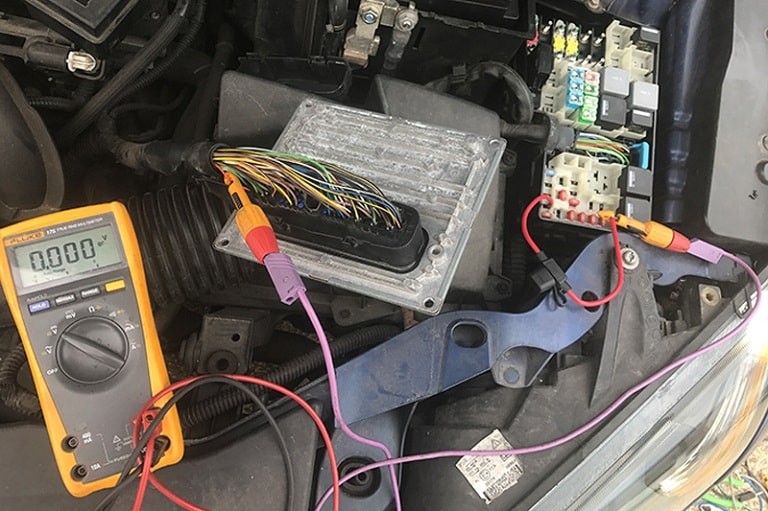The Ford Diagnostic Trouble Code (DTC) U1900:20 indicates a communication error within the vehicle’s network. This error often manifests in a no-start condition and can be particularly prevalent in the Ford Focus. While frequently associated with a faulty instrument cluster, the U1900:20 code can stem from various underlying issues. This article delves into the causes of this DTC, diagnostic procedures, and potential solutions.
Common Causes of Ford DTC U1900:20
The U1900:20 code points to a problem in the communication network, often between the instrument cluster, the powertrain control module (PCM), and other modules. Several factors can contribute to this communication breakdown:
- Faulty Instrument Cluster: Damaged solder joints, connector pins, or internal circuitry within the instrument cluster can disrupt communication. Physical damage or wear and tear are common culprits.
- Wiring Issues: Damaged or corroded wiring harnesses, loose connections, or broken wires within the network can interrupt the flow of information, triggering the U1900:20 code.
- PCM Problems: In some cases, a malfunctioning PCM can be the root cause of the communication error. This might require PCM reprogramming or replacement.
- Low Battery Voltage: Insufficient battery voltage can disrupt the proper functioning of the vehicle’s electrical system, including communication between modules.
- Blown Fuses: A blown fuse related to the communication network can also lead to the U1900:20 code. Always check relevant fuses before delving into more complex diagnostics.
Diagnosing Ford DTC U1900:20
Accurately diagnosing the underlying cause of U1900:20 is crucial for effective repair. Here’s a recommended diagnostic approach:
- Retrieve Diagnostic Trouble Codes (DTCs): Use a professional-grade diagnostic scanner to retrieve all stored DTCs. U1900:20 often accompanies other codes that can provide further clues.
- Visual Inspection: Inspect the wiring harnesses and connectors related to the instrument cluster and PCM for any visible damage, corrosion, or loose connections.
- Battery Voltage Test: Ensure the battery voltage is within the specified range. Low voltage can contribute to communication errors.
- Fuse Check: Inspect the fuses associated with the communication network and the instrument cluster. Replace any blown fuses.
- Wiring Continuity Test: If no visible damage is found, use a multimeter to test the continuity of the wiring between the instrument cluster and the PCM. This will identify any broken or damaged wires.
- Instrument Cluster Testing: If wiring and other components check out, the instrument cluster itself may require testing and potentially remanufacturing or replacement.
Solutions for Ford DTC U1900:20
The solution for U1900:20 depends on the diagnosed cause:
- Instrument Cluster Repair/Replacement: A faulty instrument cluster often necessitates repair or replacement. Remanufactured clusters offer a cost-effective solution.
- Wiring Repair: Damaged or corroded wiring must be repaired or replaced to restore proper communication.
- PCM Reprogramming/Replacement: If the PCM is faulty, reprogramming or replacement might be necessary.
- Battery Replacement/Charging: Address low battery voltage by replacing or charging the battery.
- Fuse Replacement: Replace any blown fuses with the correct amperage rating.
Conclusion: Resolving U1900:20 for Reliable Performance
The Ford Dtc U1900:20 can be a frustrating issue, but a systematic diagnostic approach can pinpoint the root cause. By understanding the potential causes and utilizing proper diagnostic techniques, you can effectively resolve this communication error and restore your Ford vehicle to reliable operation. Remember, thorough diagnosis is key to avoiding unnecessary part replacements and ensuring a lasting fix. Consult a qualified automotive technician for professional assistance if needed.

